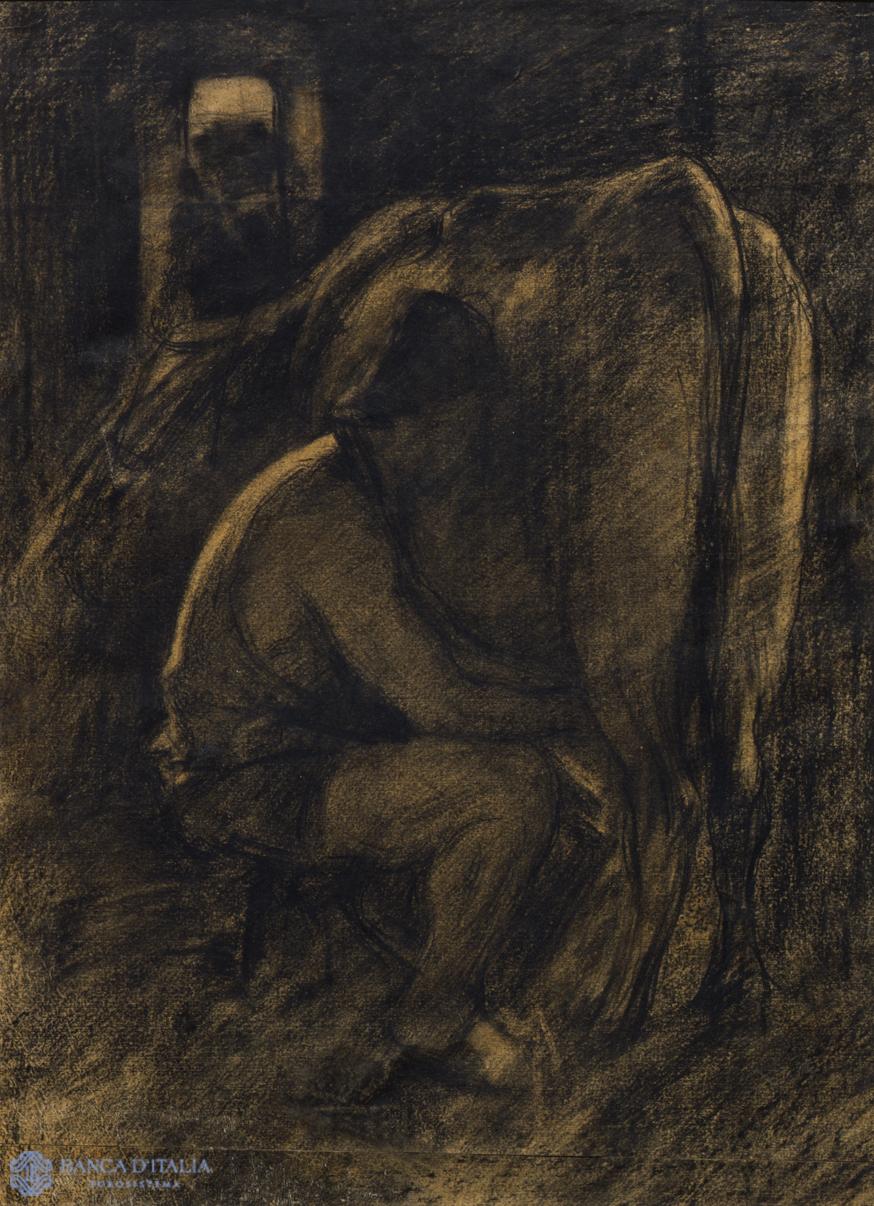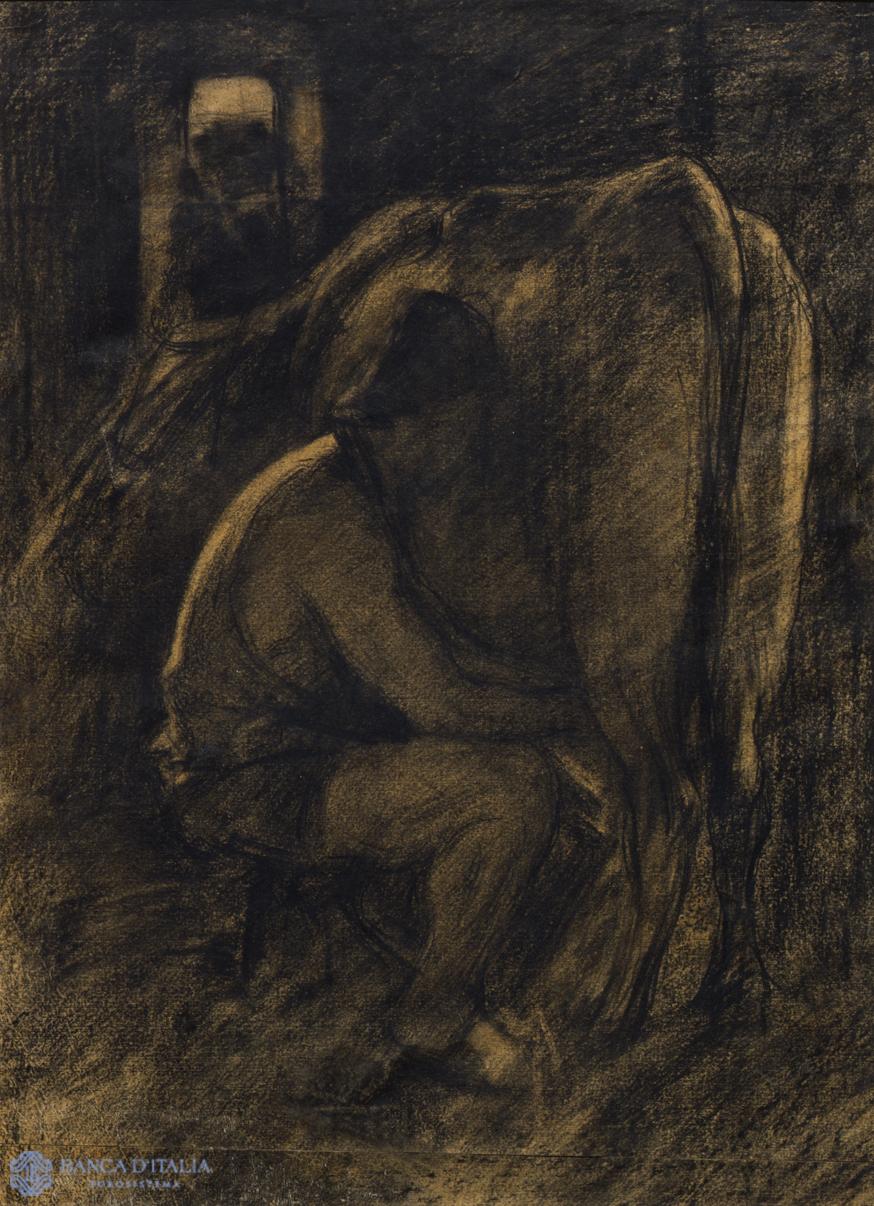Giovanni Segantini (Arco 1858 – Schafberg 1899) had a difficult childhood, part of which was spent in a reformatory. He trained at the Brera Academy in Milan, where he was initially influenced by the naturalism of the Lombard painters Tranquillo Cremona and Daniele Ranzoni – two representatives of the Luminist movement – before gradually turning to realism. From 1886 to the year of his death he lived in the Graubünden canton, in Switzerland, working in a style that closely united his naturalistic-realistic vocation with the language of Divisionism originating in France and spreading throughout Europe at the time.
A fundamental characteristic of Segantini’s art was his ideal search, increasingly explicit over the years, to imbue the unblinking gaze he directed at reality, and at rural life in particular, with an allegorical value. This tendency to attach an allegorical significance to his work links him, in this respect, to the symbolist culture that was also spreading rapidly in Europe, not only in France but also in German-speaking countries, Austria especially, and in Switzerland.
The work of Giovanni Segantini is accordingly situated at a complex crossroads of languages and ideals, all strongly present in the closing years of the 19th century.
His very personal reworking of the various means of expression he espoused makes Segantini a figure of outstanding importance in the European artistic scene of his time.
Giovanni Segantini
Giovanni Segantini (Arco 1858 - Schafberg 1899)
19th century AD


